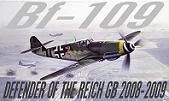Hey bigshot,
Your gonna really make me think now aren't ya.
Well lets see for one, any kind of reference books, pictures and the like are the most important part. Well at least for me because it helps me get a picture of how I want my subject(s)to turn out.
By using the reference books, it will be able to help you in the add of paint schemes, weathering(every day use) storage of equipment and the surroundings.(make sense??)
For the weathering you can use pastel chalk(use a brand new number 11 blade to scrap the chalk into chalk dust)
From there use a brush to start the weathering process in the normal areas(things that move,open, roll, lift, oil stains, exhaust stains,chips.... ect)
You can also do a "smudge was" which helps to hi-light the panel lines(anything that is recessed) When I use this method I tend to mix water based paint w/ distilled water. The ratio of paint to distilled water is up to you my friend. Oil paints are good as well but I'm not too formilar with them
![Sad [:(]](/FSM/CS/emoticons/icon_smile_sad.gif)
. But from what I have seen they work and look good.
In camoing your 72d tanks, well thats not really my bag.
I think either Shermanfreak or renarts would be a good one to ask.
What would I know, I'm just a "Fly Boy"
![Tongue [:P]](/FSM/CS/emoticons/icon_smile_tongue.gif)
![Big Smile [:D]](/FSM/CS/emoticons/icon_smile_big.gif)
. At any rate there a lot of talented guys/gals here that will be more than willing to help out a fellow modeler.
Flaps up, Mike

 If you would listen to everybody about the inaccuracies, most of the kits on your shelf would not have been built Too Close For Guns, Switching To Finger
If you would listen to everybody about the inaccuracies, most of the kits on your shelf would not have been built Too Close For Guns, Switching To Finger